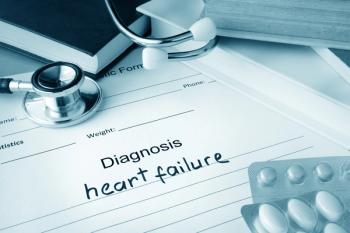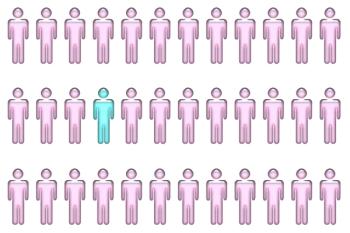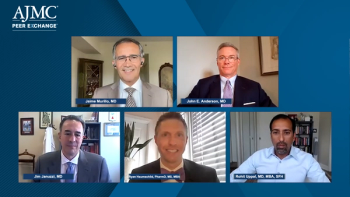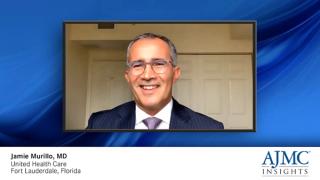
Heart Failure
Latest News
Latest Videos

CME Content
More News

Disease symptomatology may be the same, but the presentation of heart failure (HF) and heart attacks differ between women and men, explained Amresh Raina, MD, of the Allegheny Health Network in Pittsburgh, Pennsylvania.

Patients with heart failure frequently suffer from fluid overload, and for those with heart failure with reduced ejection fraction (HFrEF) also suffering from septic shock—a condition often treated with fluids—more data are needed on outcomes following fluid administration.

Risk factors not properly addressed in patients with asymptomatic heart failure, such as high blood pressure and having diabetes or mild heart valve problems, can lead to structural heart problems or heart failure itself, noted Amresh Raina, MD, of the Allegheny Health Network in Pittsburgh, Pennsylvania.

The limited data on heart failure (HF)-related mortality among young adults, those aged 15 to 44 years, prompted this analysis of data from 1999 to 2019 that considered HF as a contributing or underlying cause of death.

Despite known racial disparities in access to advanced heart failure (HF) treatments, the reasons for this continue to require further exploration. In this new study, investigators searched for associations between ventricular assist device use and heart transplant and race (Black or White).

There is potential impact on the heart, coronary arteries, and heart function following radiation to the left side of the body, explained Amresh Raina, MD, director of the Advanced Heart Failure and Pulmonary Hypertension Program at Allegheny General Hospital and the Allegheny Health Network in Pittsburgh, Pennsylvania.

The impact of the COVID-19 pandemic on pediatric heart transplant waiting list times was evaluated in this new study that used data from the United Network for Organ Sharing.

Outcomes following a heart attack, or myocardial infarction (MI), were assessed among a large patient population in Ontario, Canada.

Amresh Raina, MD, director of the Advanced Heart Failure and Pulmonary Hypertension Program at Allegheny General Hospital and the Allegheny Health Network in Pittsburgh, Pennsylvania, is a board-certified advanced heart failure cardiologist, who is also certified in echocardiography and general cardiology.

This potential outcome was particularly evident among study participants who had heart failure (HF) with preserved ejection fraction, a subtype of HF with few therapeutic options.

When mapping out treatment strategy, it is important to first establish dominant disease physiology in patients who have heart failure (HF) and pulmonary hypertension, explained Allegheny Health Network's Amresh Raina, MD.

The panel of experts provide their final insights regarding unmet needs surrounding treatment management of heart failure.

Experts share their thoughts on payer and provider perceptions surrounding affordable HF care, as well as strategies to manage care-associated costs.

Multiple comorbidities lead to an emphasis on multidisciplinary care management when determining the most effective HF treatment strategies.

Russell Rotondo, MD, FACC, medical director of clinical strategy and innovation for cardiology at Cohere Health, discusses the myriad positive ways utilization management programs can have an impact on patient outcomes in cardiovascular care.

Amresh Raina, MD, is director of the Advanced Heart Failure and Pulmonary Hypertension Program at Allegheny General Hospital and the Allegheny Health Network in Pittsburgh, Pennsylvania.

This study investigated long-term mortality outcomes following transcatheter aortic valve replacement (TAVR) among patients with a left ventricular ejection fraction (LVEF) below 50% and comorbid severe aortic stenosis.

This new study investigated risk factors for cardiovascular disease, including heart failure, among hospitalized patients with a recent history of methamphetamine use and priority patient populations to target.

People who experienced childhood poverty and other adversities are at greater risk of premature death in adulthood; Pfizer’s COVID-19 vaccine is 73% effective in protecting children younger than 5 years; women experience more symptoms of heart failure and other cardiovascular diseases than men.

This subanalysis of data from the ELDERCARE-AF trial investigated the safety and effectiveness of a 15-mg daily dose of the factor Xa inhibitor among older patients who have atrial fibrillation (AFib).

Entresto (sacubitril/valsartan) is approved for use in adult and pediatric heart failure, and previous research shows it to be cost-effective in the long term.

The REVEAL-HF study investigated using risk scores to improve patient outcomes through targeted interventions, including treatment initiation and intensity, end-of-life care, and hospitalization and mortality risks.

New heart failure guidelines redefine stages of the disease to emphasize prevention, said Biykem Bozkurt, MD, PhD, but more must be done by payers to identify those at high risk.

Martha Gulati, MD, MS, kicked off the symposium “Saving the Hearts of Women Through Prevention” ahead of the 2022 Congress of the American Society for Preventive Cardiology, which took place Friday through Sunday in Louisville, Kentucky.

Ty J. Gluckman, MD, FACC, FAHA, who is medical director of the Center for Cardiovascular Analytics, Research, and Data Science at Providence St. Joseph Health in Portland, Oregon, addressed the 2022 Congress of the American Society for Preventive Cardiology meeting in Louisville, Kentucky.























































